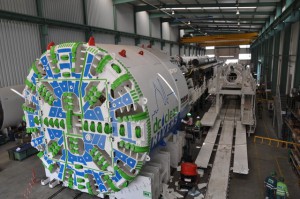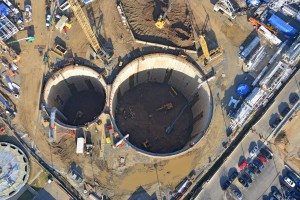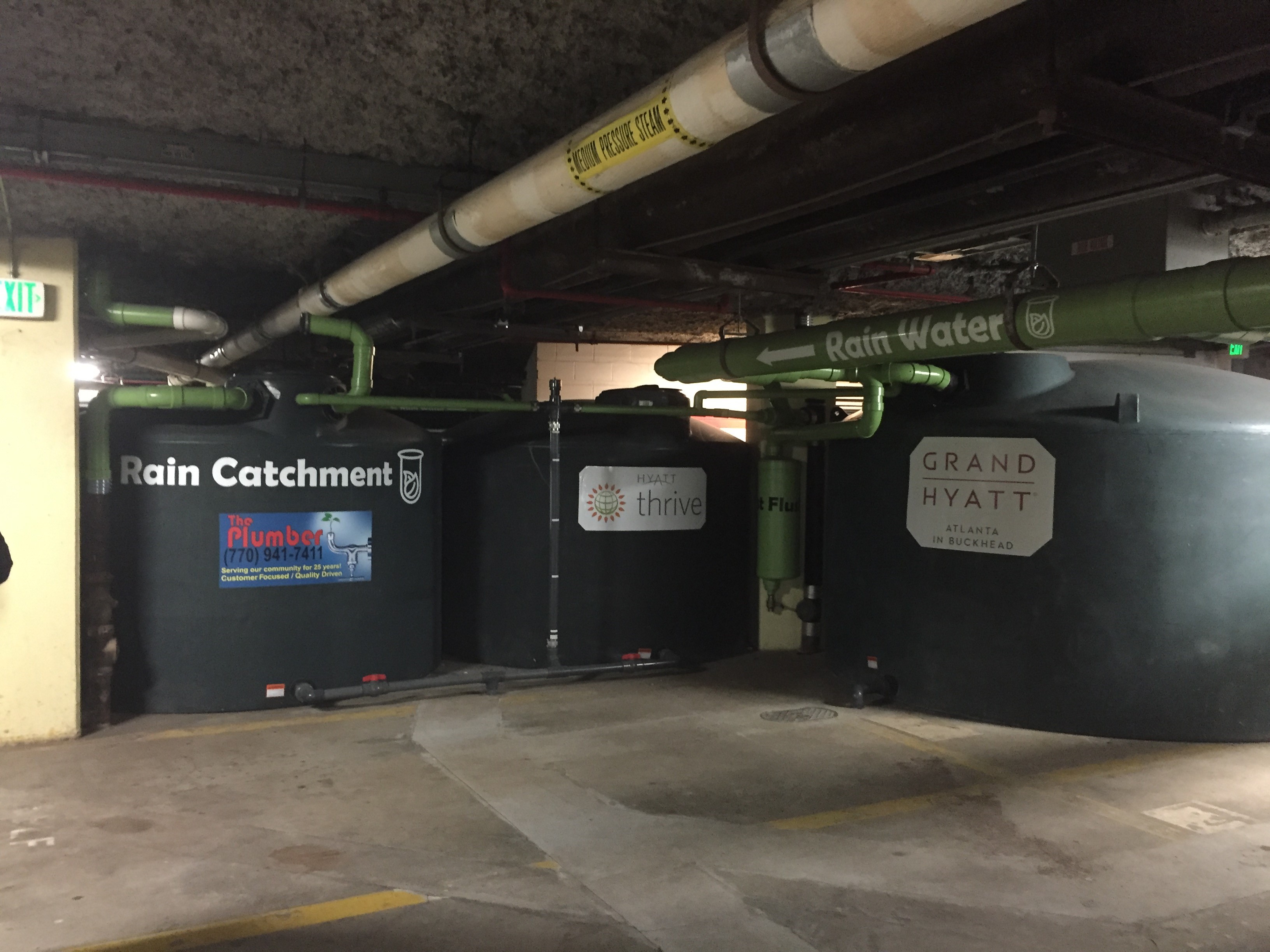
DC Water’s tunnel boring machine, Lady Bird. Images by DC Water

Lady Bird’s journey begins with two tunnel shafts.
Lady Bird, DC Water’s (Washington, D.C.) tunnel boring machine, has completed a 7.2-km (4.5-mi)-long journey that began in July 2013 at the Blue Plains Advanced Wastewater Treatment Plant. After its 2-year journey, Lady Bird has completed digging a tunnel as part of DC Water’s Clean Rivers Project that will help improve water quality in the Anacostia River. The elaborate steel face of the machine with built-in cutting and slicing tools was extracted from a 100-ft (30-m)-deep shaft near DC Water’s Main Pumping Station, according to a DC Water news release.
“This is a terrific milestone for DC Water’s Clean Rivers Project,” said DC Water CEO and General Manager George S. Hawkins. “We are fortunate that the tunneling went so smoothly, finishing on time and on budget.” Hawkins recognized DC Water staff, the company Dee Traylor/Skanska/Jay Joint Venture (Washington, D.C.), and others for their efforts in the “successful dig.”
During the job, Lady Bird removed approximately 1.2 million tons of material from underground. This material has been hauled away by nearly 72,000 truckloads during 2 years. The tunnel was built with 28,189 precast concrete segments forming 4027 full rings, the news release says.
To prepare for Lady Bird’s arrival at the pumping station, the shaft was filled with flowable fill concrete and water to protect from changes in pressure as the boring machine mined through the shaft wall. Crews then dug out the concrete to reveal the machine, the news release says.
DC Water’s Clean Rivers Project will incorporate two methods to keep wastewater and stormwater from overflowing into waterways during heavy rains. The first method is to build underground tunnels that will hold combined wastewater and stormwater until rain subsides, then convey it to Blue Plains for treatment. The second method is to create green infrastructure to capture and infiltrate rain onsite before it can reach the combined sewer system.




